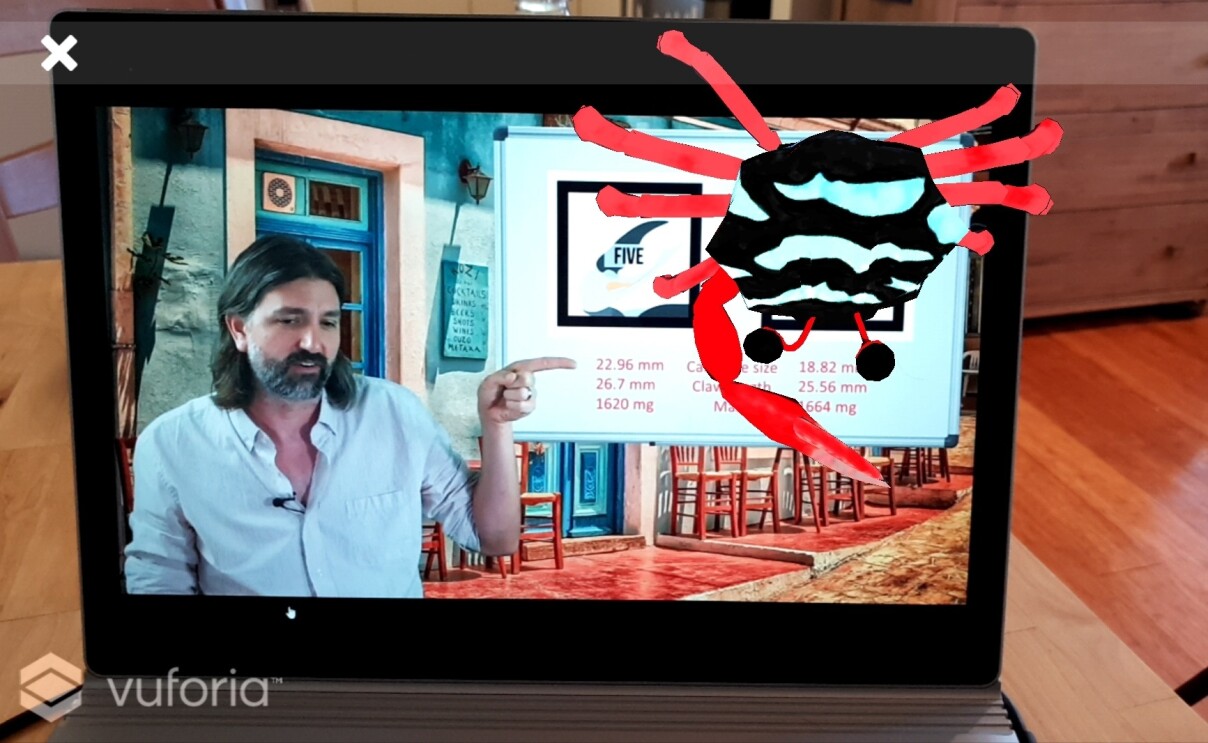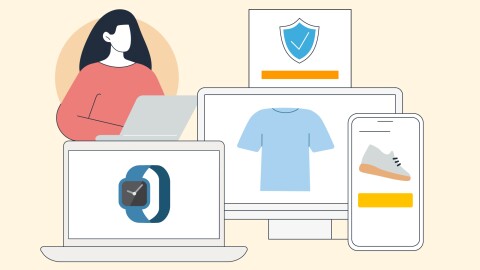With tens of thousands of students of all ages across Australia and New Zealand now learning from home, there’s no doubt our educators have done a remarkable job of adapting to engage students using online tools.
At Amazon Web Services (AWS), we’ve seen our customers step up to help, using cloud technology to quickly create innovative and engaging online education solutions. And we’re heartened to see many are making these new services available free of charge for educators during the pandemic.
There are a variety of online education services built using cloud technology, ranging from eLearning platforms and teaching resources, through to tools that monitor the wellbeing of students. But the reasons for their rapid uptake are consistent, as teachers strive to support their students’ education needs and overall wellbeing when teaching them though distance learning.
Keeping an eye on the wellbeing of students
For school teachers, students, and parents, the move to distance learning has come with new challenges, such as finding the right technical and education resources, and then keeping their remote classes engaged.
The team at Educator Impact also realised that the shift to online learning could have consequences for the wellbeing of students as teachers will no longer be monitoring them face-to-face. Educator Impact’s main focus has been a 360-degree feedback tool built for schools and educators, but the company has also created a cloud-based mobile app called Pulse that leverages AWS to monitor the wellbeing of students on a weekly basis by asking a small number of questions regularly such as ‘how are you feeling today?’, while giving at-risk students a means to ask for help.
When the COVID-19 crisis struck, Educator Impact’s Chief Technology Officer Joe Thurbon saw a ten-fold increase in interest in Pulse.
“It became immediately obvious to us that this was an opportunity to do a good and useful thing, so we decided to make Pulse available to our customers for free when the school closures began,” he said. “We’ve had teachers tell us that having students use Pulse regularly has given them real-time insight into a student’s wellbeing, which helps them to intervene early.”
Extending outreach
One of the critical factors for successful distance learning has been establishing clear and regular communication between schools, students, and parents. Usually that means email and text-based tools, but these can’t always replace the power of the spoken word.
Local podcast platform, Whooshkaa made its podcast distribution software available free to schools for the remainder of 2020. Whooshkaa’s platform enables podcasts to be shared within private groups, making it ideal for distributing relevant information and content to classes or school communities.
“Many teachers are uploading class content each day, such as podcasts, and making them available privately to students,” said Whooshkaa’s founder Rob Loewenthal. “The feedback is they love it and they are really excited about it, and think it’s a great way to educate.”
The tool has been especially helpful for teaching lessons where written instructions may not always convey the full meaning that a teacher is trying to get across.
“We had one drama teacher tell us what an amazing initiative it was, and thanked us for recognising the difficulties of delivering their classes online,” he said. “Audio is a great way to enliven student’s imagination create a deeper connection with subjects like art, drama, and music.”
Loewenthal also said audio delivery can help teachers engage with their youngest students, “We have been working with a Year 1 teacher to help them communicate in a fun and engaging way with kids who are still learning the fundamentals of reading and writing.”
Whooshkaa is built on AWS and uses Amazon Polly, which turns text into lifelike speech. Loewenthal says running in the cloud helps the company rapidly scale and he expects more than one thousand schools will be using the tool by the end of April.
“Everything we do has to be delivered quickly – in microseconds – so there’s no disruption when listening to our podcasts and that is why we use AWS, because it allows us to deliver consistently no matter the demand,” he said. “We know there are more than one thousand schools in the world and are ready to scale our platform to work with them all.”
Rapidly moving to the cloud
The COVID-19 pandemic means some of our customers have had to totally rethink how they are delivering their education services, and look for new ways to offer content designed for face-to-face classrooms.
EdTech company Arludo built a library of almost 30 mobile apps hosted on AWS which are designed to improve students’ engagement with science, using augmented reality (AR) and analytics technology. Its founder, UNSW Associate Professor Michael Kasumovic, had planned that its next step would involve the creation of an eight-week in-person program to bring his science technology into schools. But when that idea was curtailed by the COVID-19 outbreak, he taught himself the essentials of webcasting instead.
“Now we have a full online immersive course where we bring scientists to students wherever they are, and they can do experiments with scientists in real time,” he said. “Our goal from the beginning was to create a system where kids who live in remote areas can interact with science online, so when COVID-19 came along, we were already prepared.”

Kasumovic said he’s had a great response to the course, which uses gaming techniques to help students learn about topics ranging from how memory works to how animals forage, including one that lets students build and study animals like fiddler crabs by using augmented reality, without bringing them to kids in the classroom.
“I’ve had parents tell me that despite their high school-aged children thinking they were too cool for this, they are now hooked on our lessons,” Kasumovic said.
Supporting the surge in online learning
Managing the rapid growth of online learning has been critical for New Zealand-based Education Perfect (EP), a digital education platform that provides transformative online teaching and learning experiences.
Education Perfect’s CEO Alex Burke said when COVID-19 restrictions began and students made the shift to home-based education, the company decided to initially make its platform available worldwide free of charge until the start of May.
“Our technology helps to plan and run lessons, track students’ engagement real time, and work independently,” Burke said. Our online learning platform is developed with teachers to enhance their teaching, in the classroom and at home. Teachers have been able to set and monitor homework and flip the learning experience with us for years and in today's remote learning landscape, our platform does its best to minimise teacher workload and create a positive educational experience for both teachers and students.”

Since the beginning of March, Education Perfect has seen more than 1.2 million students in over 4,000 schools across 80 countries now accessing the platform.
“Teachers are telling us that this has been a lifesaver given how quickly they went into lockdown,” Burke said. “Many of our teachers have created their own lessons and uploaded content, and these resources will be there for future use.”
And in the words of one of Education Perfect’s users: “Getting students through the daily grind is not easy, and the program provides powerful tools to hold students’ accountable for their own learning. The program allows teachers to be designers of their own lessons and teaching.”
Burke said being built on AWS meant EP could cope with the huge growth in user numbers, and it usually peaks now at more than one million server requests per second.
A future beyond the pandemic
While educators and our customers alike have both had to quickly adapt as a result of the pandemic, the current crisis may also have a lasting impact on education delivery. So while many have forgone revenue while supporting students and educators, some, such as New Zealand software development company, Kami, believe their generosity will be rewarded.
Kami developed an education software that makes it easy for teachers to annotate any existing documents including PDF files with notes or audio and video clips in a web browser. This technology and has proven popular with teachers to drive engagement and interaction with students using Kami’s digital pen and paper.
Executive chairman Bob Drummond said the company was contacted in February by a school in Hong Kong with a request for free access to the software, to help its teachers engage with students as the school went into lockdown. In April alone, Kami has had more than two million new sign-ups from thousands of schools.
And while Drummond said he was initially concerned about how long a company could survive while giving away its software, customers have increasingly opted to pay for it as they realise the benefits of web-based learning.
“There is a lot of change taking place around the world as educators invent remote learning – I think a lot of this is going to flow back to the way classrooms are structured and the way learning works.”
So while students will hopefully be back in the classroom soon, they might also continue listening to their teachers delivering podcasts, interacting with mobile learning games, or performing any number of other learning-related tasks using the cloud.
According to EP’s CEO Alex Burke, “Teachers have benefited from the platform’s student-teacher engagement capabilities and real-time data and student insights. I think schools are really seeing how technology can complement traditional teaching methods, and how they can apply this to classrooms after the pandemic is over.”












